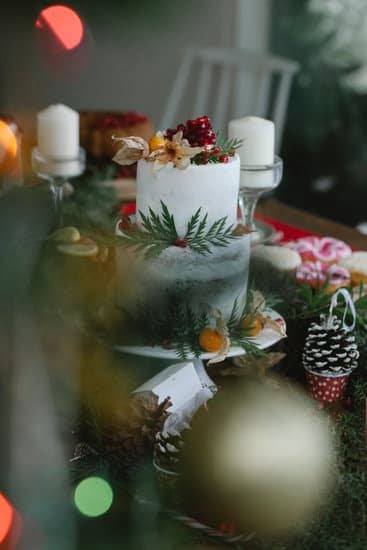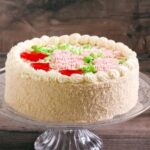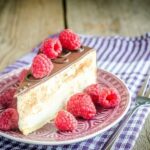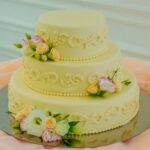Are you looking to elevate your baking skills and create visually stunning and delicious cakes? In this article, we will explore the art of cake decoration and provide you with valuable tips and techniques on how to create beautiful, professionally decorated cakes right in your own kitchen.
Cake decoration is not just about making a cake look pretty; it is an essential part of the overall baking experience. The right decorations can take a simple cake from ordinary to extraordinary, adding both visual appeal and flavor. From elegant wedding cakes to fun birthday creations, the art of cake decoration allows bakers to showcase their creativity and artistic talents while delighting taste buds.
In this comprehensive guide, we will delve into the tools and materials needed for cake decoration, discuss various cake bases suitable for decoration techniques, provide step-by-step instructions on basic and advanced decorating techniques, offer creative design ideas, troubleshoot common challenges in decorating, and even share tips on showcasing your masterpiece.
Whether you are a novice baker or a seasoned pro, mastering the art of cake decoration will allow you to create beautiful confections that are as delightful to admire as they are to eat.
Let’s get started.
Essential Tools and Materials for Cake Decoration
When it comes to cake decoration, having the right tools and materials is essential for creating a beautiful and delicious masterpiece. Whether you are a beginner or a seasoned baker, having the necessary equipment can make all the difference in achieving professional-looking results. From piping bags to fondant tools, here are some essential items that every cake decorator should have in their arsenal.
Basic Tools
Before diving into cake decoration, it’s important to have some basic tools on hand. This includes an offset spatula for smooth frosting application, a bench scraper for creating clean edges, and a turntable for easy maneuvering while decorating. Additionally, investing in a good set of piping tips and bags can elevate your designs and allow for intricate details on your cakes.
Fondant and Gum Paste Tools
If you plan on working with fondant or gum paste for your cake decorations, there are specific tools that will come in handy. These may include a rolling pin for flattening out the fondant, various fondant cutters for shaping decorations, and a fondant smoother for achieving a seamless finish on your cakes.
Coloring and Painting Supplies
Adding color to your cake decorations can truly bring them to life. Make sure to have gel food colors on hand as they provide vibrant shades without altering the consistency of your icing. In addition, having edible paint brushes and dusts can allow you to add intricate details and accents to your designs.
By having these essential tools at your disposal, you’ll be well-equipped to bring your cake decoration ideas to life. Knowing how to use these tools effectively is just as important as having them, so take the time to practice and familiarize yourself with each item before starting any decoration project.
Choosing the Perfect Cake Base
Cake decoration is not just about the intricate designs and colorful frosting; it also heavily relies on the type of cake base used. Choosing the perfect cake base is crucial in ensuring that your decorations stay intact and complement the overall taste of the cake. There are various types of cakes suitable for decoration, and each has its own unique characteristics that make it ideal for specific techniques.
One popular choice for cake decoration is a sponge cake, known for its light and airy texture which makes it easy to absorb syrups and fillings without becoming soggy. Another option is a butter cake, which has a rich and moist crumb that holds up well under heavy frosting or fondant. For more complex designs and sculpting, a dense pound cake may be the best choice as it can support heavier decorations without losing its shape.
When choosing the right cake base for specific decoration techniques, consider factors such as flavor, texture, and moisture content. A sturdy cake that can support layers of frosting or fondant will work well for intricate designs, while a lighter cake may be more suitable for delicate decorations such as edible flowers or piped details.
Ultimately, selecting the perfect cake base is essential in achieving a beautifully decorated masterpiece. Experiment with different types of cakes to find the one that best suits your desired decorations and enhances the overall flavor of your creation. By understanding the characteristics of each type of cake, you can elevate your skills in cake decoration and create stunning confections that are equally delicious.
| Types of Cakes Suitable for Decoration | Characteristics |
|---|---|
| Sponge Cake | Light and absorbent texture |
| Butter Cake | Rich and moist crumb |
| Pound Cake | Dense and sturdy structure |
Basic Cake Decoration Techniques
When it comes to cake decoration, mastering the basics is essential for creating visually stunning and delicious cakes. Whether you’re a beginner or looking to refine your skills, learning the fundamental techniques is crucial. Here’s a step-by-step guide on how to do cake decoration using basic methods such as frosting, piping, and fondant application.
Frosting is a fundamental skill in cake decoration, and there are various types of frostings to choose from, including buttercream, cream cheese, and ganache. To achieve a smooth frosted finish on your cake, start by applying a thin layer of frosting as a base coat.
This will help seal in any crumbs before adding the final layer of frosting. Use an offset spatula to spread the frosting evenly across the cake while turning it on a rotating stand for even coverage.
Piping is another essential technique that allows you to create intricate designs and patterns using different piping tips. Before piping, ensure that the frosting has the right consistency – too stiff will make it difficult to pipe, while too soft will result in sloppy designs. Practice basic piping techniques such as stars, shells, and rosettes on a flat surface before attempting them on your cake. Once you feel confident, you can then start decorating your cake with beautiful piped designs.
Lastly, fondant application is a versatile technique that allows for smooth and creative decorations. When working with fondant, make sure to knead it until it’s pliable and roll it out into an even layer using a rolling pin dusted with powdered sugar or cornstarch. Carefully drape the fondant over your frosted cake and smooth out any air bubbles or wrinkles using a fondant smoother tool.
These basic cake decoration techniques are foundational skills that every baker should practice and perfect. With patience and dedication, you can elevate your cakes from simple desserts to works of art that are as pleasing to look at as they are delicious to eat.
| Cake Decoration Technique | Description |
|---|---|
| Frosting | Applying an even layer of frosting for a smooth finish |
| Piping | Creating intricate designs using different piping tips |
| Fondant Application | Using fondant for smooth and creative decorations |
Advanced Cake Decoration Techniques
Exploring Sugar Flowers
Creating sugar flowers is a beautiful and intricate advanced cake decoration technique that can elevate the overall look of your cake. To make sugar flowers, you will need gum paste or fondant and flower cutters in various shapes and sizes. Begin by rolling out the gum paste or fondant and cutting it into petals using the flower cutters.
Then, you can use special shaping tools to add texture and shape to each petal before assembling them to create a stunning sugar flower. It takes practice to master this technique, but the results are truly impressive.
Sculpting Masterpieces
Sculpting cake decorations involves shaping edible materials such as fondant or modeling chocolate into three-dimensional figures or objects. This advanced technique allows you to create custom cake toppers, figurines, or even intricate structures like castles and vehicles. To sculpt with fondant or modeling chocolate, be sure to have sculpting tools and reference images for guidance. It’s essential to work slowly and carefully when sculpting, paying attention to details like facial features and clothing folds for figurines.
Airbrushing Magic
Airbrushing is an advanced cake decoration technique that allows you to add vibrant colors, shading, and effects to your cakes with ease. Using an airbrush machine and edible food colors, you can achieve smooth gradients, intricate patterns, and realistic textures on your cakes. Mastering airbrushing techniques requires practice in controlling the airbrush’s pressure and distance from the cake as well as mastering stencil usage for precise designs.
By mastering these advanced cake decoration techniques, you can take your decorating skills to new heights and create show-stopping cakes that will impress any audience. Experimenting with different techniques will help you find your unique style as a cake decorator while allowing you to unleash your creativity in new ways.
Remember that practice makes perfect, so don’t be discouraged if your first attempts aren’t flawless. With dedication and patience, you can become a truly skilled cake decorator capable of creating stunning works of art in edible form.
Tips for Designing Creative Cake Decorations
Cake decoration is not just about making a cake look pretty; it is an art form that allows you to unleash your creativity and design skills. From simple frosting techniques to intricate sugar flower arrangements, there are countless ways to make your cake stand out. In this section, we will explore some tips for designing creative cake decorations that will elevate your baked creations to a whole new level.
When it comes to designing creative cake decorations, the possibilities are truly endless. Here are some tips and ideas to help you get started:
- Experiment with different colors and textures: Don’t be afraid to play around with different frosting colors and textures to create unique designs.
- Get inspired by nature: Take inspiration from nature and incorporate elements such as flowers, leaves, or even fruits into your cake decorations.
- Think outside the box: Consider using unconventional materials such as edible glitter, metallic accents, or even hand-painted details to add a touch of uniqueness to your designs.
Creativity is key when it comes to cake decoration. Whether you are designing a birthday cake, wedding cake, or any other special occasion dessert, the ability to think creatively and execute your ideas is what will set your creations apart.
Remember, practice makes perfect when it comes to mastering the art of cake decoration. Don’t be afraid to experiment with different techniques and designs until you find what works best for you. With dedication and creativity, you can turn any ordinary cake into a masterpiece that will leave everyone in awe.
With these tips in mind, you’ll be well on your way to creating stunning and unique cake decorations that will impress anyone who lays eyes on them. The key is to have fun with the process and let your imagination run wild. So go ahead, grab your tools and materials, and start experimenting with different designs – the sky’s the limit.
Troubleshooting Cake Decoration Challenges
Cake decoration, much like any other form of art, comes with its own set of challenges. Whether it’s achieving the perfect frosting consistency or mastering precision piping, troubleshooting these issues is essential to creating a flawless cake masterpiece. In this section, we will address some common cake decoration challenges and provide solutions and tips for overcoming them.
One of the most common challenges in cake decoration is achieving the right frosting consistency. Frosting that is too thick can be difficult to spread, while frosting that is too thin may not hold its shape when piped onto the cake.
To overcome this challenge, it is important to carefully follow the recipe and add liquid or powdered sugar gradually until you reach the desired consistency. Additionally, using a pastry bag and different tips can also help control and apply the frosting more effectively.
Another common challenge faced by novice cake decorators is color mixing. Achieving the perfect shade of frosting or fondant can be tricky, especially when trying to match a specific color. To avoid ending up with an undesirable shade, start with a small amount of food coloring and mix it thoroughly before adding more as needed. Keeping a color chart handy can also help in creating consistent shades for your cake decorations.
Precision piping is another area where many decorators struggle. Uneven or inconsistent piping can detract from the overall look of the cake. One tip for improving your piping skills is to practice on parchment paper before decorating the actual cake. This allows you to get comfortable with different piping tips and techniques before working on your edible masterpiece.
By understanding how to troubleshoot these challenges and practicing different techniques, aspiring cake decorators can improve their skills and confidently create visually stunning cakes that taste just as delicious as they look.
Showcasing Your Cake Masterpiece
Creating a beautifully decorated cake is an art form, and showcasing your masterpiece is just as important as the decoration process itself. Once you have put in the time and effort into designing and decorating your cake, it’s crucial to present it in a way that does justice to your hard work.
Whether you are making a cake for a special occasion or simply for your own enjoyment, how you present and showcase your creation can greatly enhance the overall experience for both yourself and those who will be enjoying it.
When it comes to showcasing your cake masterpiece, it’s essential to carefully consider the presentation. This includes choosing the right display stand or platter to complement the design of your cake. The display should not only be visually appealing but also provide stability and support for the cake. There are various options available including cake stands, pedestals, or decorative plates that can add an elegant touch to your presentation.
In addition to the physical presentation of the cake, taking high-quality photographs is essential for capturing its beauty before it gets devoured. Good lighting is key when photographing cakes, whether natural light or artificial light, ensure that your setup highlights the colors and details of your creation.
When sharing photos on social media, use hashtags and tags related to baking and decorating to expose your work to a wider audience. This can provide validation for your hard work as well as open up new opportunities within the baking community.
Conclusion
In conclusion, cake decoration is not just a skill, but also an art form that has the power to transform a simple cake into a masterpiece. By carefully choosing the right tools and materials, selecting the perfect cake base, mastering basic and advanced decoration techniques, and embracing creativity, anyone can become adept at creating stunning cake designs. The key lies in practice and experimentation to unleash one’s full potential in the realm of cake decoration.
As mentioned earlier in this blog post, it is crucial to have the essential tools and materials for cake decoration. Whether it’s frosting, piping tips, fondant, or food coloring, these items play a significant role in achieving the desired look for your decorated cake.
Additionally, understanding how different types of cakes lend themselves to various decoration techniques is equally important. By equipping oneself with knowledge and resources on how to do cake decoration effectively, anyone can elevate their baking skills and create visually appealing cakes.
Lastly, while mastering cake decoration techniques takes time and effort, it’s important to remember that practice makes perfect. Embracing creativity and continuously seeking inspiration will ultimately lead to the creation of unique and eye-catching cake designs. Therefore, I encourage all aspiring bakers and decorators to immerse themselves in this delicious art form by putting their newly acquired knowledge into practice. With dedication and perseverance, one can truly become a master at how to do cake decoration.
Frequently Asked Questions
What Are the Steps in Cake Decorating?
Cake decorating involves several steps. First, you need to bake the cake and let it cool completely before starting. Then, you can level the cake layers, add a crumb coat of frosting, and chill the cake. Finally, you can decorate the cake with additional frosting, piping, fondant accents, or other decorations.
How to Decorate a Cake at Home Easy?
Decorating a cake at home can be made easy with a few key tips. Start by choosing simple designs or techniques that match your skill level. Use the right tools such as offset spatulas, piping bags, and tips. Practice your piping skills on a separate surface before applying it to the cake.
What Are the 7 Different Cake Decorating Techniques?
There are seven main cake decorating techniques: frosting a smooth buttercream layer, creating decorative piped borders and rosettes with different tips, using fondant to create shapes and figures, adding edible prints or images to cakes, using edible paints or airbrushing for detailed designs, creating textured patterns with stencils or brushes, and using fresh flowers or fruits for natural decoration.
Each of these techniques allows for endless creativity in customizing cakes for any occasion.

Welcome to our cake decorating blog! My name is Destiny Flores, and I am the proud owner of a cake decorating business named Cake Karma. Our mission is to provide delicious, beautiful cakes for all occasions. We specialize in creating custom cakes that are tailored specifically to each customer’s individual needs and tastes.





